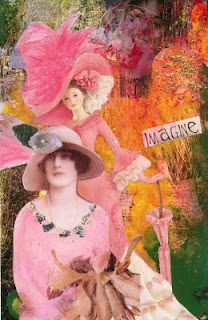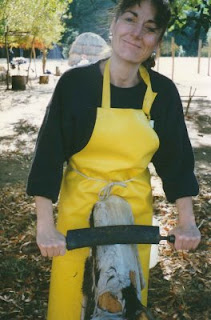

A group of friends got together yesterday and altered photographs. Among the materials we used were sandpaper (to scratch the emulsion surface), watercolor and acrylic paints, glitter glue, magazine images and foil.
Above is an example of the original photograph I used and what it looks like after being altered.
There are no rules. Start with pictures that you're ready to toss, don't like or don't know what to do with. Then soak the photo in a tray of water for about 10 seconds, scratch the image surface with sandpaper, a coin or other rough material (while photo is still wet), add paint, glue collage materials to the surface, paint some more, and add anything else that suits your fancy.
An altered photo will never come out the way you expect. They're intended to be a spontaneous creation and don't have to make sense. Just make it fun. These can make great cards!
Above is an example of the original photograph I used and what it looks like after being altered.
There are no rules. Start with pictures that you're ready to toss, don't like or don't know what to do with. Then soak the photo in a tray of water for about 10 seconds, scratch the image surface with sandpaper, a coin or other rough material (while photo is still wet), add paint, glue collage materials to the surface, paint some more, and add anything else that suits your fancy.
An altered photo will never come out the way you expect. They're intended to be a spontaneous creation and don't have to make sense. Just make it fun. These can make great cards!
Comments
Post a Comment